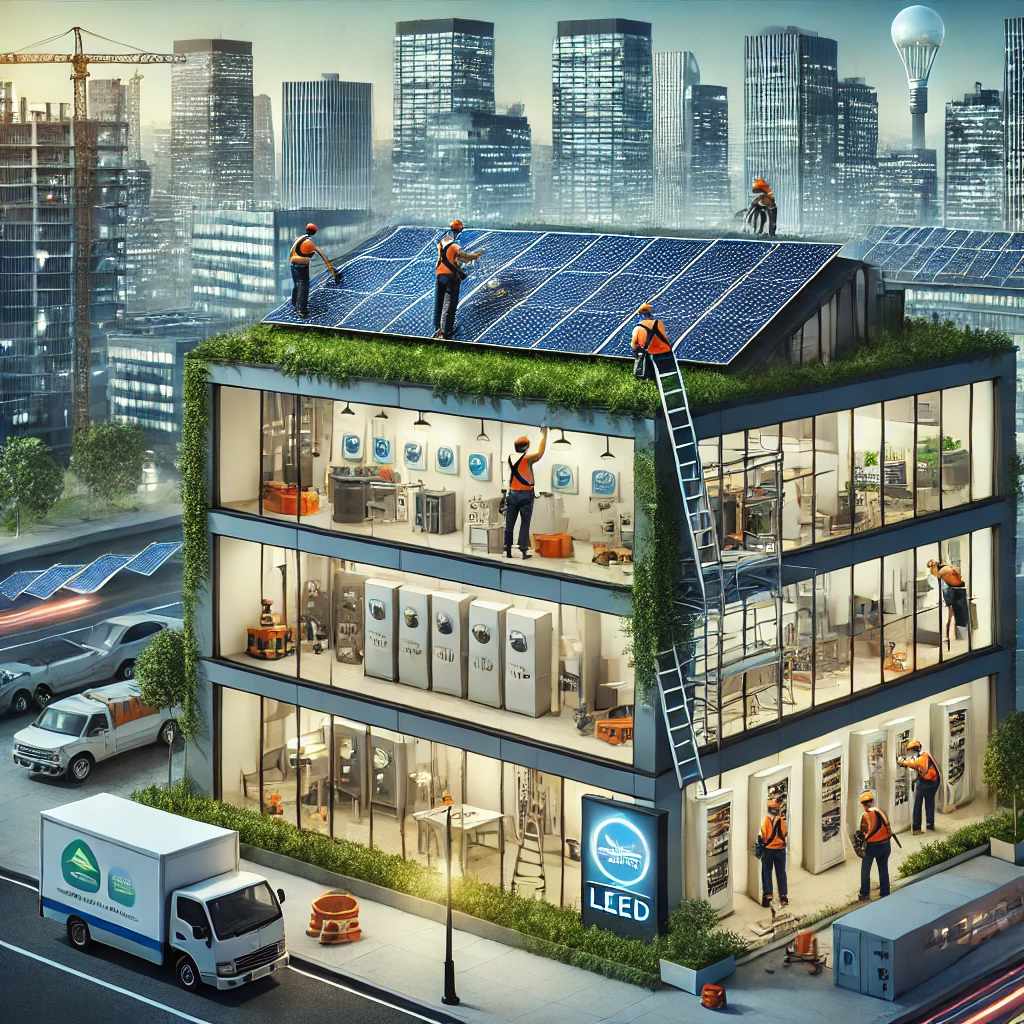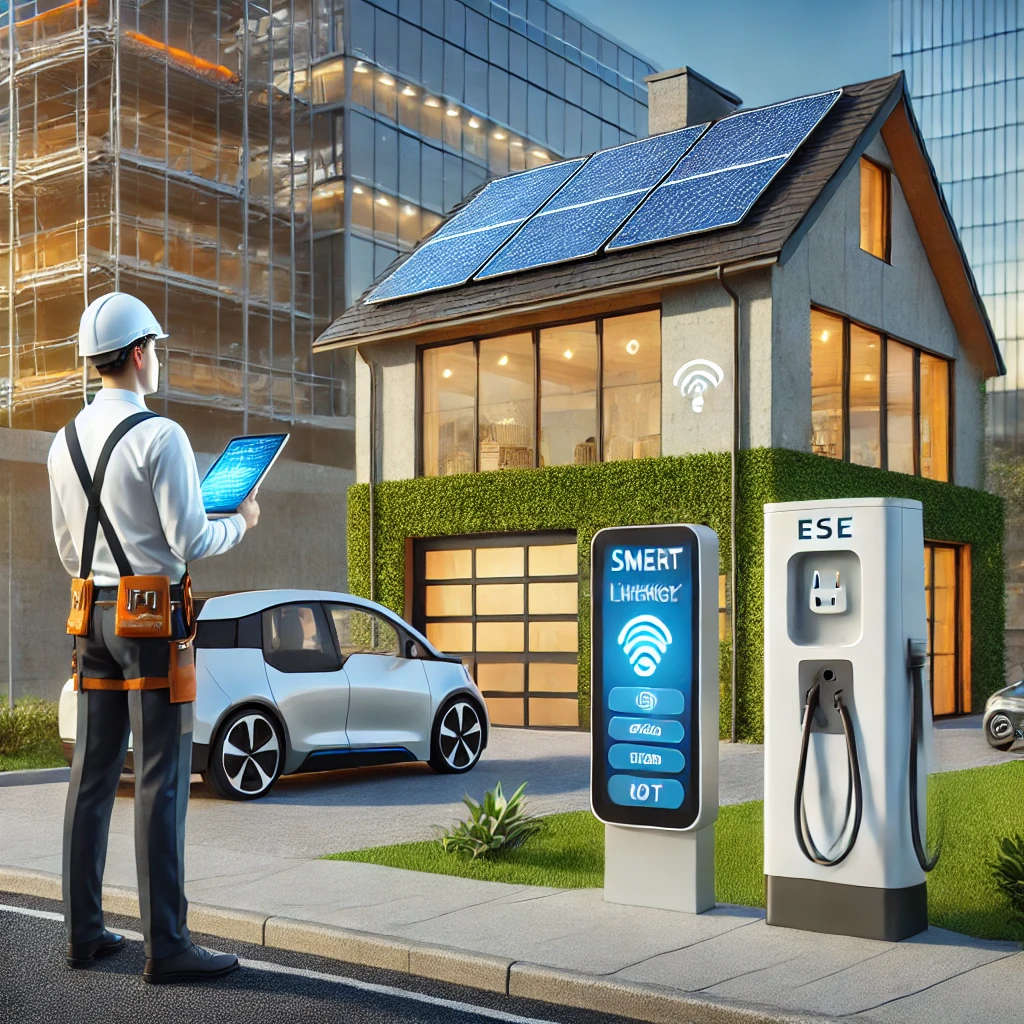As the world transitions to a cleaner, more energy-efficient future, retrofitting and electrification have become…
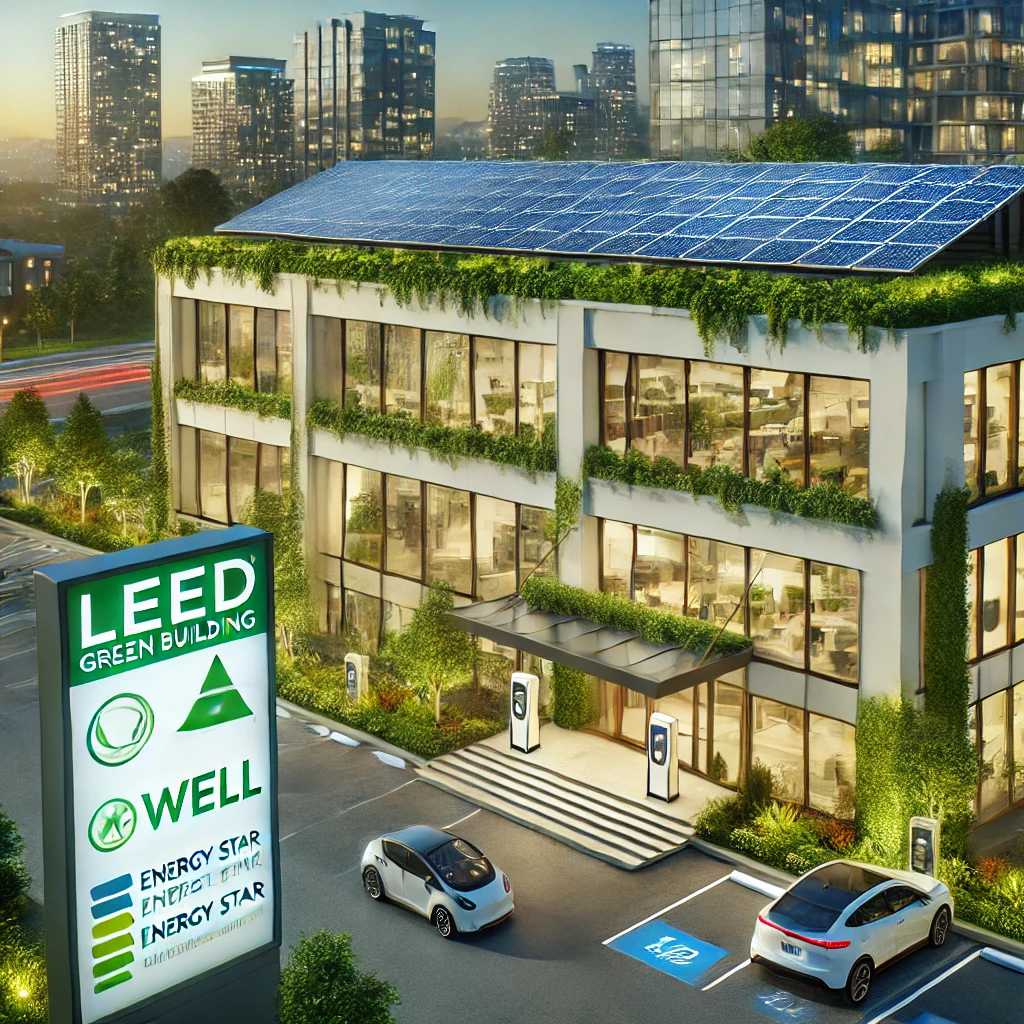
The Role of Green Building Certifications: A Pathway to Value and Sustainability
Green building certifications have emerged as a vital benchmark in the construction and real estate industries. Certifications such as LEED, WELL, and ENERGY STAR signal a property’s commitment to sustainability, energy efficiency, and occupant well-being, making them increasingly valuable in today’s environmentally conscious market. For contractors, understanding and leveraging these certifications can lead to significant opportunities in retrofitting projects, adding both tangible and intangible value to buildings.
🎧 Listen Now: Building a Greener Future 🎙️
Explore the innovative strategies and powerful stories shaping a greener, more sustainable future. Tune in to gain actionable insights and inspiration.
🎙️ Powered by iHeart Podcasts
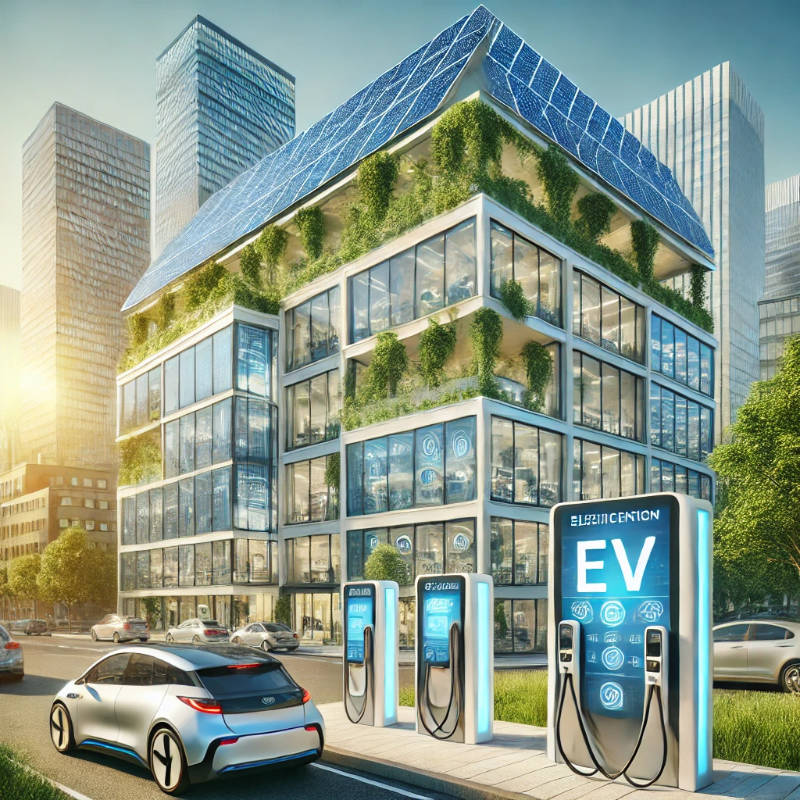
Understanding the Certifications
LEED (Leadership in Energy and Environmental Design)
- Focus: Energy efficiency, reduced environmental impact, and sustainable practices.
- Value Proposition: LEED-certified buildings often enjoy higher property values, operational cost savings, and tax incentives. Such buildings are magnets for environmentally conscious tenants and buyers who value sustainability in their living or working spaces.
- Key Points for Contractors: Electrical contractors play a crucial role in LEED certification. By implementing energy-efficient systems, integrating renewable energy sources, and supporting smart grid infrastructure, contractors can help properties earn valuable LEED points.
WELL Building Standard
- Focus: Health and well-being of building occupants.
- Value Proposition: WELL-certified buildings emphasize indoor air quality, lighting optimization, and thermal comfort, making them particularly attractive in a world where employee wellness is a top priority. Employers increasingly view WELL certification as boosting employee productivity and satisfaction.
- Key Points for Contractors: Contractors can ensure WELL compliance by focusing on HVAC upgrades, installing low-emission systems, and designing lighting solutions that align with natural circadian rhythms to promote health and comfort.
ENERGY STAR Certification
- Focus: Energy efficiency and environmental performance.
- Value Proposition: ENERGY STAR-certified buildings consume 35% less energy and produce fewer greenhouse gases than non-certified properties. These benefits make the certification especially attractive in commercial real estate, where tenants prioritize lower utility costs.
- Key Points for Contractors: Retrofitting projects involving high-efficiency HVAC systems, LED lighting, and advanced energy monitoring tools are instrumental in achieving ENERGY STAR benchmarks.
| Certification | Focus | Value Proposition | Key Points for Contractors | Cost |
|---|---|---|---|---|
| LEED | Energy efficiency, reduced environmental impact, sustainable practices | Increased property values, operational savings, tax incentives, attracts environmentally conscious tenants and buyers | Implement energy-efficient systems, smart grids, renewable energy integration | $20,000 – $60,000 |
| WELL Building Standard | Health and well-being of occupants | Promotes better indoor air quality, lighting, and thermal comfort | Focus on HVAC upgrades, low-emission systems, optimized lighting solutions | $12,000 – $111,000 |
| Energy Star | Energy efficiency and environmental performance | 35% less energy use and fewer greenhouse gas emissions, lower utility costs | Retrofit with high-efficiency HVAC, LED lighting, energy monitoring tools | $1,000 – $1,500 |
How Certifications Transform Retrofitted Buildings
Green certifications provide measurable benefits that align with market demands, particularly in retrofitted buildings. They:
- Reduce Operating Costs: Modern energy-efficient technologies, such as smart thermostats, heat pumps, and renewable energy systems, lower energy consumption and operational expenses.
- Enhance Marketability: Certified properties attract eco-conscious tenants and buyers who pay a premium for sustainable and healthy spaces.
- Ensure Compliance with Regulations: Many certifications meet or exceed local and federal regulations on electrification and energy standards, ensuring properties remain compliant now and in the future.
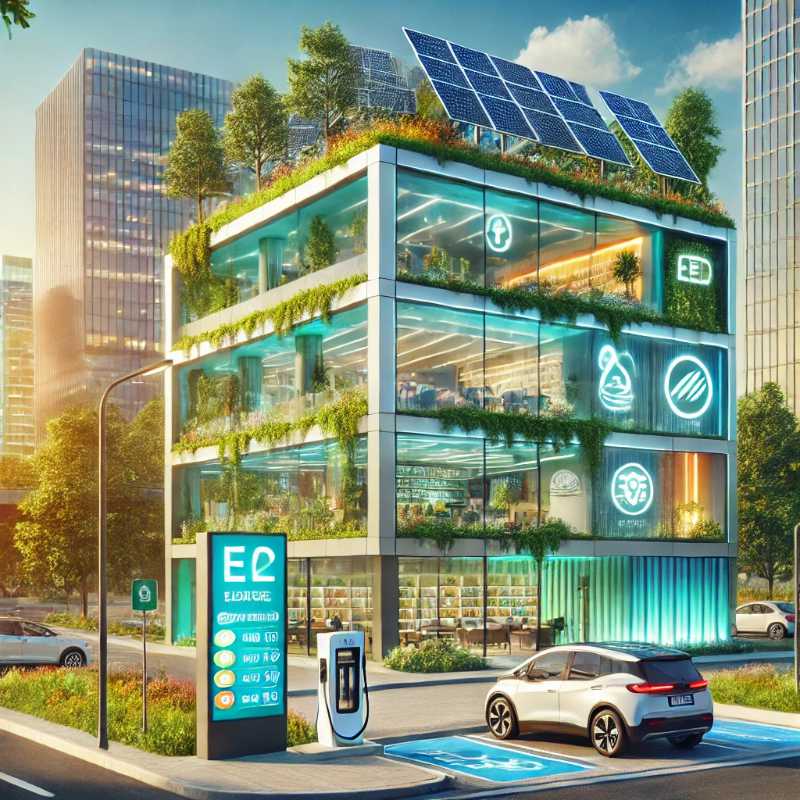
Action Steps for Contractors
1. Understand Certification Requirements
Contractors must familiarize themselves with the LEED, WELL, and ENERGY STAR certification criteria. Online training resources and certification-specific workshops can help contractors stay up-to-date.
2. Partner with Certification Experts
Collaborating with architects, sustainability consultants, and energy auditors ensures that retrofitting projects meet certification requirements. These partnerships streamline the process and add credibility to a contractor’s offerings.
3. Use Green Technologies
Retrofitting with renewable energy systems, energy-efficient appliances, and advanced monitoring tools not only aids in certification but also provides long-term value to building owners.
4. Communicate Benefits to Clients
Emphasizing certifications’ return on investment (ROI) can convince clients to pursue them. Highlight benefits such as increased property value, operational cost savings, and alignment with corporate sustainability goals.
Examples of Certified Retrofitted Projects
Empire State Building (LEED Gold)
A landmark retrofit project, the Empire State Building underwent extensive upgrades, including improved insulation, energy-efficient windows, and advanced building controls. The result: a 38% reduction in energy use and $4.4 million in annual savings.
TD Bank’s Toronto Office (WELL v1)
As the first WELL-certified office globally, this project prioritized employee health through enhanced air and water quality, ergonomic design, and optimized lighting to support productivity and well-being.
275 Slater Street (LEED Platinum, ENERGY STAR)
A 55-year-old office building was transformed into a sustainability powerhouse through deep retrofits. The project included high-efficiency HVAC systems, advanced insulation, and solar energy integration, achieving the highest levels of green certification.
Emerging Trends in Green Building Certifications
Global Growth and Market Influence
Green building certifications are rapidly becoming a cornerstone of sustainable construction across the globe. With over 100,000 LEED-certified projects spanning 180 countries, the reach and influence of these certifications continue to expand. The increasing demand for energy-efficient and sustainable spaces is evident as businesses and individuals prioritize healthier and more efficient environments.
A Shift Toward Health-Centric Design
The WELL Building Standard has witnessed a surge in adoption as awareness of occupant health and well-being grows. In a post-pandemic world, the focus on indoor air quality, lighting, and thermal comfort has prioritized WELL certification for both commercial and residential spaces.
Economic and Environmental Impact
Energy Star certification remains a benchmark for energy efficiency, offering a proven pathway to cost savings and environmental benefits. Certified buildings use 35% less energy and produce significantly fewer greenhouse gas emissions, making them an attractive choice for cost-conscious property owners and tenants.
The Bigger Picture: Why Certifications Matter
- Market Value: Properties with green certifications command higher rental rates and resale values, providing a measurable return on investment.
- Government Backing: Policies and incentives from governments worldwide support certification adoption, making it easier and more appealing for property owners to invest in sustainability.
- Sustainability as a Priority: Sustainability is no longer a “nice-to-have” but a critical factor driving purchasing and leasing decisions, reflecting a broader cultural shift toward environmental responsibility.
Final Thoughts
Green building certifications are no longer optional in the construction and retrofitting landscape—they are essential. Understanding and integrating certification guidelines into their projects allows electrical contractors to attract premium clients, increase profitability, and contribute to a sustainable future. As businesses and individuals prioritize sustainability and health, certified buildings stand out as leaders in innovation and environmental responsibility.
By positioning themselves as experts in certification-focused retrofitting, contractors can play a pivotal role in transforming the built environment and driving the shift toward a greener, healthier planet.

